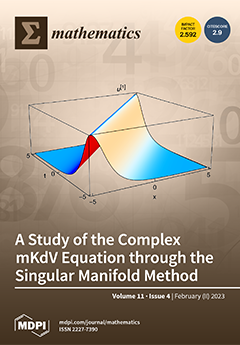From recent studies, the concept of “monotone expectation” (ME) of Interactive Multi-Attribute Decision Making (MADM) is well known, which was developed for the case of different fuzzy sets. This article develops the concept of “monotone expectation” for such statistical parameters as variance,
[...] Read more.
From recent studies, the concept of “monotone expectation” (ME) of Interactive Multi-Attribute Decision Making (MADM) is well known, which was developed for the case of different fuzzy sets. This article develops the concept of “monotone expectation” for such statistical parameters as variance,
-order moment and covariance. We investigate the problem of the definition of some statistical parameters, when the uncertainty is represented by a monotone measure—a fuzzy measure—instead of an additive measure. The study presents the concept of the definition of monotone statistical parameters based on the Choquet finite integral for the definition of monotone expectation, monotone variance, monotone
-order moment and monotone covariance. Associated statistical parameters are also presented—expectation, variance,
-order moment and covariance—which are defined in relation to associated probabilities of a fuzzy measure. It is shown that the monotone statistical parameters defined in the study are defined by one particular relevant associated statistical parameter out of the total number
of such parameters. It is also shown that the aggregations with monotone statistical parameters used in interactive MADM models take into account interactions of the focal elements of only one consonant structure from the
consonant structures of attributes. In order to take into account the interactions of the focal elements of all
consonant structures of attributes, the monotone statistical parameters were expanded into the
-associated statistical parameters. Expansion correctness implies that if dual second-order Choquet capacities are taken as the fuzzy measures of aggregation of the
-associated statistical parameters, then the
-associated statistical parameters coincide with the corresponding monotone statistical parameters. A scheme for embedding new aggregation operators, monotone statistical parameters and
-associated statistical parameters into the interactive MADM model has been developed. Specific numerical examples are presented to illustrate the obtained results.
Full article





